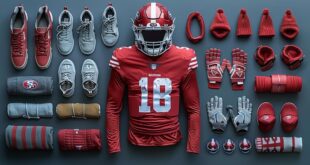Whether you are buying your first ever surfboard or want to add one more feather to your collection, it’s critical to know how to pick the appropriate surfboard for your height. It doesn’t matter if you are a total newbie who has just started learning to surf or you are a professional one ready to make it big; it is crucial to understand the principles underlying board design, dimensions, and shape.
This guide will assist you in choosing a surfboard for every level by explaining the size and volume of surfboards, the many types of surfboards, and anything else you need to know.
You can create your custom surfboards via this page if you want to realize your surfing potential fully.
Let’s get started on it!
Things To Consider When Buying Surfboards
The perfect board for you depends on various factors, including your height, skill level, and many more.
Skill Level
You should pick a board that isn’t too challenging for you. You must choose one that is appropriate for your level of skill because of this. Advanced, intermediate, and beginner are the three levels. However, if you are confused and know your skill level, you can ask an experienced friend or surf instructor to observe you catch some waves and give their assessment.
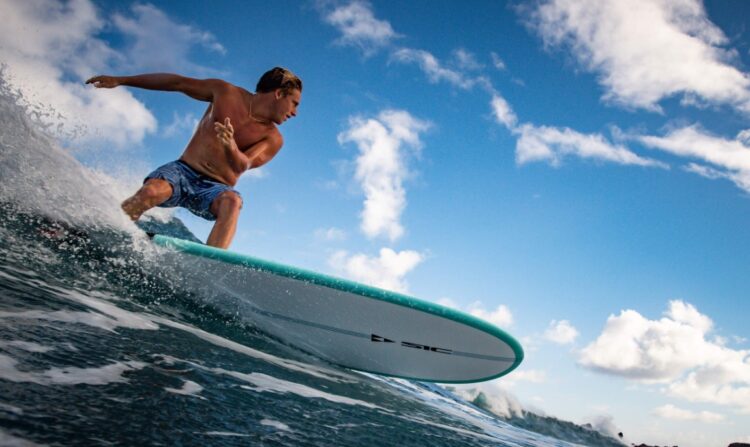
The Right Volume And Height
The ideal surfboard height depends on your degree of fitness, weight, expertise, and surf conditions. Calculating the optimal volume, which is specific to each rider, is one crucial factor. You may determine the volume by multiplying the surfboard’s length, width, and thickness.
The board’s volume, measured in liters, affects the board’s speed, stability, and paddling effectiveness. The volume can be challenging to calculate, so surfboard shapers typically do it by running computer simulations.
For instance, if the dimensions of a surfboard are 6’2″ x 21 x 2 – 42 L, it essentially implies that the board is 6’2″ long, 21inches wide, and 2 inches thick, with a volume of 42 L.
If you accurately assess your skill, surf conditions, experience, and degree of fitness, you can choose the right board. This is based on the volume, which determines the height of your board overall. The tables below use the average weekly surfing days to provide a general estimation of the weight range to help you choose the size of the board.
The tables below provide a weight range to help you choose the size of the board you should buy.
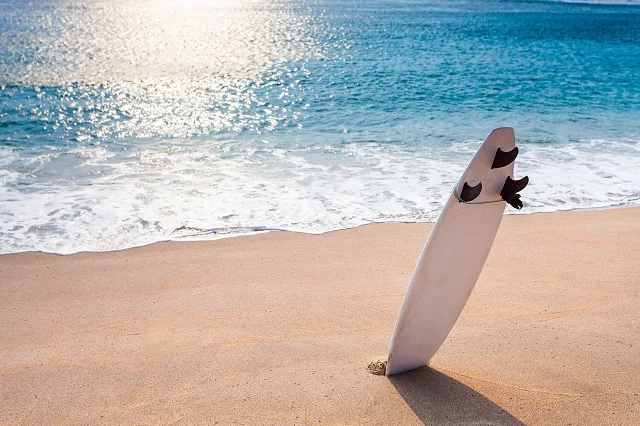
When you surf less than two days in a week
| Weight Of The Surfer(lbs) | Length Of The Surfboard | Width Of The Surfboard | Thickness Of The Surfboard |
| 100-140 | 6’2” to 6’4” | 1834” to 1914″ | 214” to 238” |
| 140-160 | 6’4” to 6’8” | 19” to 20” | 238” to 212” |
| 160-180 | 6’6” to 6’10” | 1912″ to 2012” | 212” to 258” |
| 180-200 | 6’10” to 7’4” | 20” to 2112″ | 234” to 3” |
| 200+ | 7’4” + | 2112″ to 2212” | 3” to 314” |
When you surf more than two days in a week
| Weight Of the Surfer (lbs) | Length Of The Surboard | Weight Of The Surfboard | Thickness Of The Surfboard |
| 100-140 | 6’0” to 6’4” | 1812” to 19” | 214” to 238” |
| 140-160 | 6’2” to 6’6” | 1834” to 1914″ | 238” to 212” |
| 160-180 | 6’4” to 6’8” | 19” to 1934″ | 212” to 258” |
| 180-200 | 6’8” to 7’2” | 1912″ to 2012” | 258” to 278” |
| 200+ | 7’2” | 20” to 2112″ | 3” to 314” |
The Waves
Surfing is a fantastic experience and excitement since no two waves are exactly alike. Which wave you will ride is a crucial factor to consider when purchasing a surfboard. You might have trouble catching a wave even if you travel kilometers away from your regular beach. Because of this, it’s crucial to consider the different wave conditions when choosing a board.
You can find resources like predictions and tools to assist you in assessing the local weather. As a shaper designs their boards, they will consider this as the design factor. It’s crucial to realize that there could not be a single board that works for every wave. Therefore, your chosen board will depend on where you plan to surf.
For instance, a broader tail area is better for smaller, weaker waves. A narrow-tailed board, however, will perform much better in solid seas.
Thankfully, the variety of readily available surfboard types simplifies this decision-making process. These days, most surf shops keep this information visible and easily accessible.
Types Of Surfboard
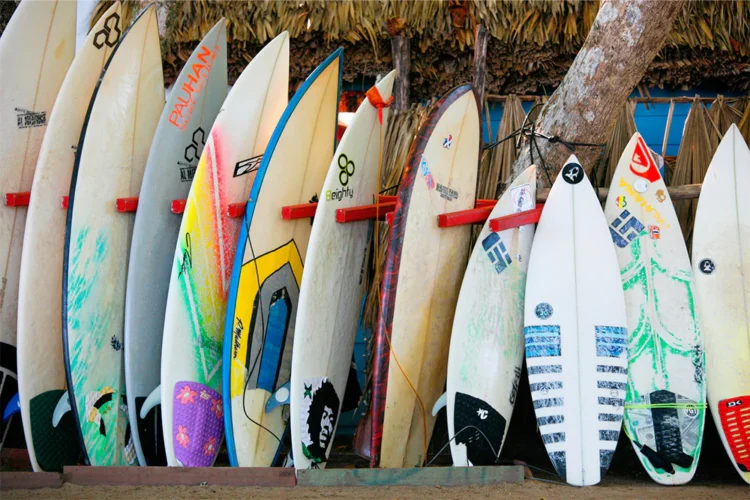
Remember that your surfboard should suit your needs. There are various types of boards, yet there is one that will check all the boxes:
Fish board
This one is the first option you should make if you want a lot of speed and buoyancy. You need different boards for different waves, as seen from the list above. This one performs well on small to medium waves and will undoubtedly make riding weak waves pleasurable for you. One of its weaknesses is the difficulty in catching waves with this board compared to a bigger board. However, it offers more maneuverability than the larger boards but is less flexible than a shortboard.
Shortboard
If you are at the advanced stage, that means if you are experienced and looking for a board with superb maneuverability, you should choose this one. This board performs best in robust wave conditions. However, remember that catching waves on a shortboard is more challenging than on a bigger board.
If you are an intermediate rider, you must be cautious in not switching to a shortboard too soon. If you do so, you will be unable to ride it properly, slowing your development.
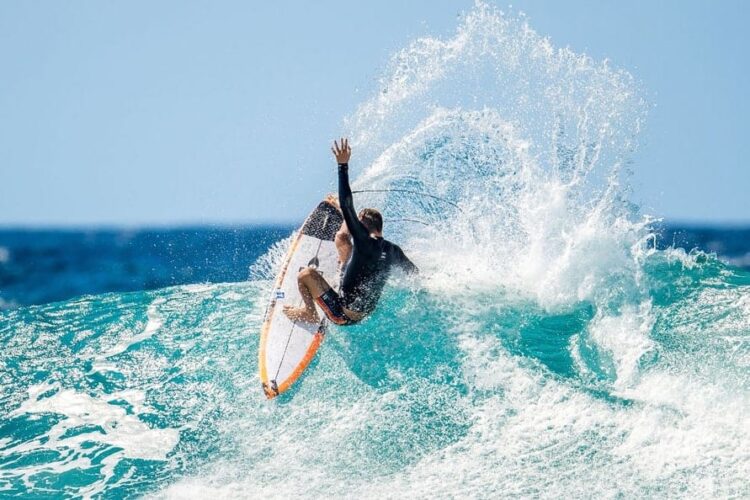
Funboards
The funboard can be a fantastic option if you’re a newbie looking to advance from a longboard. This board is a wonderful option for a beginner because it lies amid the fish and longboard categories.
When compared to a longboard, a funboard offers easy paddling. Additionally, it provides more maneuverability when compared to a dashboard. This is the perfect choice if you have just begun surfing in the slight swell.
Longboard
As suggested by the name, longboards are somewhat larger. They range in size from 8 to 11 feet. Anyone, from beginners to experts, can utilize this board. Because it performs best in little waves, it makes for a fantastic year-round surfing option.
You can get a smoother turn with higher stability and flotation if you use a longboard. But remember that it would be challenging to make quick maneuvers due to its size.
You’ve now seen several surfboards, but there is a specific surfboard for beginners. You can learn to surf on a foam board with many volumes. It will give the board control, stability, and ease of paddling and catching waves.
Conclusion
These are the basics of a surfboard, and knowing them can help you choose the best one for you. Always purchase one appropriate for your experience level; avoid buying the most recent model.
 Hi Boox Popular Magazine 2024
Hi Boox Popular Magazine 2024

